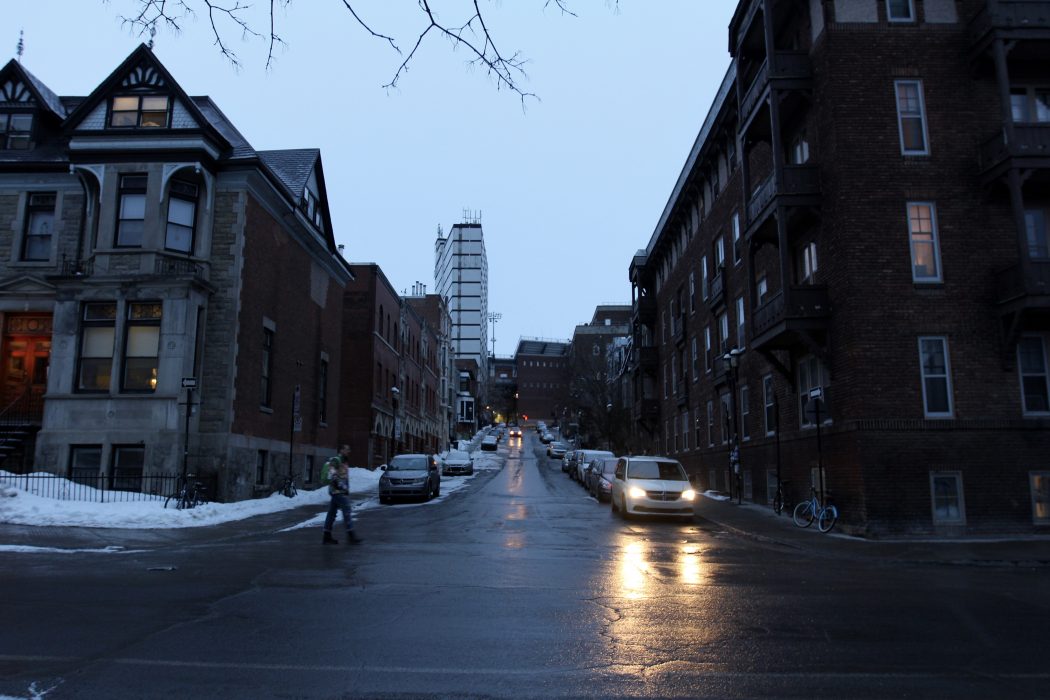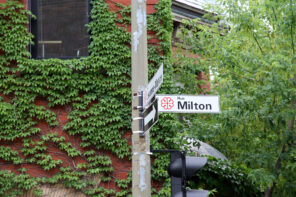While most Montrealers have adopted safety measures recommended by the government in light of COVID-19, the tasks of quarantine and social distancing are made much more difficult for those who do not have a shelter. The outbreak presents a unique challenge for Montreal’s homeless population, who are more vulnerable to catching the disease and face serious health risks if contracted.
Government Response
Montreal has lost a total of 300 shelters in efforts to comply with social distancing recommendations, described at a press conference on March 29th. Many shelters have been shut down, while some merely implemented a reduced capacity.
At the press conference Mayor Valérie Plante announced new measures, including the opening of sanitation hubs, mobile canines, and three new outdoor day centers. Additionally, the Royal Victoria hospital will be able to accommodate homeless people waiting for test results. “My message today is to say that we are working very hard,” she said.
At the press conference, Welcome Hall Mission CEO Samuel Watts gave a message of hope: “ I see a city where everybody has the experience of community, because community is what holds us all together. Once we are out of this crisis, I think this is something that is entirely possible.”
There are many more barriers for homeless people to get access to the resources that are easily available to the rest of the population.
While the above measures leave the city with a net gain of 50 beds, this is unlikely to be sufficient. Anne Bergeron, the communications manager at Logifem, a women’s long term emergency shelter, says that places such as fast-food restaurants or malls, which previously served as a place to rest during the day or in the rain, have much more limited access. With few people walking the streets, there is also little opportunity for panhandling. Nakuset, the executive director of Resilience Montreal says, “They’re in a different kind of crisis; they used to rely on society to help them but society is completely shut down.”
As a result, the number of people searching for shelter has increased at the same time as homeless shelters have shut down or reduced availability. Avery, who works at an emergency homeless shelter, explained that “with closures of most, the majority of shelters and services in the Montérégie area being closed, more and more are on the streets, desperate for shelter.”
Some feel that the mainstream practices being promoted to prevent the spread of COVID-19 have not been geared to address the homeless population. Nakuset said, “The city does not have a comprehensive plan on how to deal with the homeless population for COVID. We are all playing catch-up at this point.”
She added that while the government is trying their best to help, it is difficult without the necessary tools: “I’m not pointing fingers at anyone that it is their fault, but it is just unfortunate [that] this population was sort of forgotten about this pandemic.”
Social Distancing
Already, the life expectancy for homeless people is 20 years fewer than other demographics, and their lifestyles are often harder to adapt to social distancing measures adopted by other at-risk groups. Mélodie Racine says that homeless people “are very at risk of not just catching [COVID-19], but actually dying of it.” She explained: “They don’t eat well, they don’t sleep well. Life on the street is very hard for your body, obviously, and for your mind.”
While social distancing has been widely promoted as the current best practice to “flatten the curve,” it poses a greater challenge to those who cannot retreat into a house or an apartment. Mélodie Racine, who works at a drop-in center called Open Door, described that the homeless “are used to being so close to each other. It’s people that share a lot of things so they are more at risk.” Waiting in line for meal services and sleeping in a shelter bed is among many practices that have required rethinking since the outbreak of the pandemic.
“Valerie Plante just made an announcement today that the cops are going to crack down on social distancing. Well, everyone is in their home except for the homeless people,” Racine pointed out.
The alternative to homeless shelters is far from a sterile environment. Racine explained that the closure of shelters “means that a lot of people are going to be sleeping outside and in order to stay warm, they are going to share a blanket and sleep in a very close setting.”
Education
Information about the severity of COVID-19, health services available to the public, and the best safety practices, is channeled through sources that are often inaccessible to homeless citizens. Nakuset stated that it is unclear how homeless people are expected to get this information. “If they don’t realize the seriousness of COVID, it is just a flu to them,” she explained. “We need a doctor; we need someone to give education; we need a nursing team to give education; we need to explain to them how to social distance.”
We are all playing catch-up at this point.
With new services for homeless people being opened and existing services changing hours or shutting down, a lack of access to information is problematic. According to Mélodie Racine, “At the beginning of the pandemic, there were a lot of places that just closed their doors, so people went there and it was just closed.”
In order to combat the lack of information , both Open Door and Resistance have made an effort to announce important information throughout the day, such as the meaning of social distancing, where people can wash their hands, and how to get tested. Malarie explained, “Before we open the doors, I will step out of the center and do a little speech. We always remind everyone of the new rules in the center and also we will give them information.”
Finding a happy medium between keeping people informed and creating panic is key. “Clients are stressed; they have been rejected by a lot of places. They don’t know what to do, they know what’s happening,” said Racine.
New Challenges
There are many more barriers for homeless people to get access to the resources that are easily available to the rest of the population, such as testing sites and helplines.
“Why aren’t they getting tested?” Nakuset asked, answering simply: “Because it’s too far for them to walk.” She continued,”I really just wish [health officials] would just test people at Cabot Square.” In order to leave Cabot Square, where many homeless people in Montreal are located, one would likely need a car.
In addition, many homeless people do not know what phone numbers to call for COVID-19 or do not have a phone in the first place. Nakuset said, “We need those to help with mental health, that aren’t going to call a 1-800 number and don’t even have a phone to do it.”
There are fewer people helping us out, but we have more work to do.
For shelters that have remained open, coping with some of the barriers has proven difficult. “It is already hard work on a normal day-to-day, and now there is this added pressure that makes it even harder,” says Mélodie Racine. Anne Bergeron explained that Logi Fem has had to greatly increase the amount of cleaning staff. Additionally, the shelter has had to spread out meal times, accommodate for women being quarantined in the house, hire new kitchen staff, and more. Resilience Montreal has moved its services outside, providing meals under tents to encourage social distancing.
Avery McClure describes that relocation efforts for clients at the shelter have become more difficult due to the closure of so many services. She added, “With the quarantine, we have lifted the two-week maximum, as other shelters, therapy centers, programs, etc. are not taking new admissions until further notice.”
Moving Forward
“We also normally have a lot of volunteers that help us so we have had to suspend all our volunteer activities. So there are fewer people helping us out, but we have more work to do,” Anne Bergeron said. The increased financial burden resulting from these new sanitary requirements is intensified by the fact that their fundraisers for the foreseeable future have been canceled.
While concern is widespread, there is also a silver lining to this issue: many in the community are hoping to enact change. All three organizations have commended their staff for their support during this difficult time, and thanked those who have donated money and time. Mélodie Racine said, “My team is here every day, and it is worth noticing that some people are working so hard in order to get through the pandemic.”
For those looking to support the homeless population at this time, Samual Watts recommends: “Don’t try to jump in and do things on your own, that is usually not the best way to help out. The best way is to help people who are already helping those in need.”
If you are interested in donating to those in need, visit:








